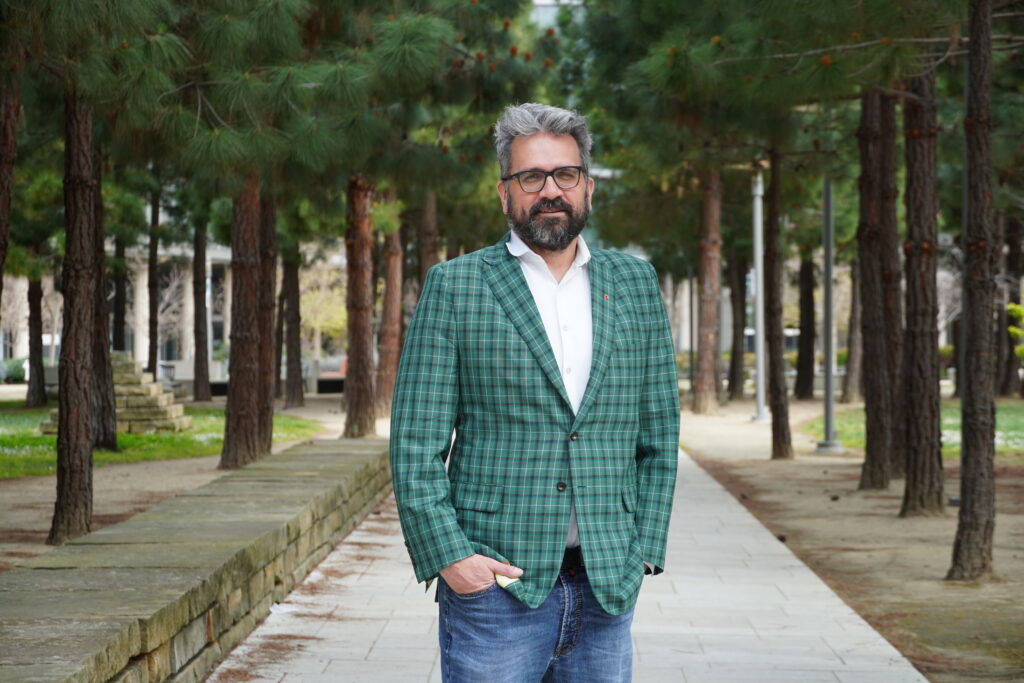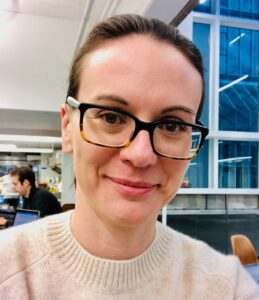Like many other members of the scientific community, Nevan Krogan, PhD, pivoted his University of California San Francisco, San Francisco, (UCSF) lab to work on COVID-19 last year. The result was a splashy Nature paper describing how SARS-CoV-2 hijacks and rewires the host during the course of an infection. The findings relied heavily on doing what the lab does best—building protein-protein interaction (PPI) maps.
But Krogan, director of the Quantitative Biosciences Institute (QBI), has been mapping PPIs for decades. During his graduate work, he focused on PPIs in simple organisms like yeast. Today, the lab is publishing a tour de force in Science that present extensive PPI maps that are likely to bring a deeper understanding to the genomic underpinnings of cancer.
Building protein maps is “the way to go,” notes Krogan, to make a big impact on human disease. To get to the functional units of the cell, “you have to get to the proteins.” In cancer research, he notes, a lot of money has been poured into genomic sequencing. Although valuable, there is point of diminishing returns, because of the enormous amount of genetic heterogeneity.
What protein maps offer, he says, is the ability to bring the genomic information to the next level by collapsing the data’s complexity.

The great value of this work, notes Kamila Naxerova, PhD, assistant professor of radiology at Harvard Medical School and principal investigator at the Center for Systems Biology at Massachusetts General Hospital, is “the systematic evaluation of the functional consequences of cancer-associated genetic alterations at the protein network level.”

Cancer genome sequencing studies, adds Naxerova, have given us a catalog of mutated genes—“broken parts”, so to speak. These studies from the Krogan lab use highly systematic methods to connect that genomic information to higher level (cellular) processes. By mapping genetic mutations onto the protein network systematically, it becomes clear that many of the mutations affect similar cellular functions.
The type of pathway grouping the investigators take, notes Jesse Salk, MD, PhD, founder and chief executive officer at TwinStrand Biosciences and oncologist in the VA health care system, is an excellent example of collapsing an increasing amount of complex data, that is becoming less and less approachable to individual physicians or investigators, into a more cohesive and approachable knowledge base.
Krogan explains how the data collapses like this: say a protein complex is made up of five proteins. Five different patients have mutations in each of the five different proteins. If it is unknown which proteins correspond to the genomic data, any overlaps would be missed. But if it is known that the proteins are in the same complex, they can be treated as the same mutation.
The maps elucidate changes in how proteins interact in the event of a mutation. Knowing how a mutation affects a specific interaction uncovers mechanism—which will lead to a deeper understanding. And a deeper understanding, Krogan adds, can be more easily translated into something of therapeutic value.
In clinical medicine, explains Salk, there are high expectations of being able to use broad genomic sequencing of cancers to help inform individual treatments. But a substantial portion of the data that comes back from these comprehensive sequencing reports is not clearly actionable. With stronger pathway analysis at the protein level, Salk asserts, there is an opportunity to inform more focused clinical studies.
Off the map
The work is published in three back-to-back Science papers, an extremely rare occurrence (with the notable exception of the three classic papers describing the cystic fibrosis gene in 1989, also in Science) and one that Krogan says he’ll “never do again.” The papers are: “A protein interaction landscape of breast cancer,” “A protein network map of head and neck cancer reveals PIK3CA mutant drug sensitivity,” and “Interpretation of cancer mutations using a multiscale map of protein systems.”
The research presented goes beyond just map making. The team illustrates how insight can be extracted from the maps.

The authors, notes Tobiloba Oni, PhD, a Whitehead Fellow at the Whitehead Institute, establish a framework for understanding how low prevalence mutations contribute to tumor progression. This framework paves the way for using targeted therapies that focus on the common denominators of these rare cancer alterations. This approach could be particularly beneficial to better stratify patients in clinical trials, thereby optimizing the efficacy of existing therapies.
The maps, Krogan adds, can be predictive with respect to prognosis. In addition, they open up new targets—something of interest to pharmaceutical companies, who, Krogan says, are “starving for targets.”
In the paper focusing on head and neck cancer, for example, a PIK3C (the alpha catalytic subunit of phosphatidylinositol 3-kinase) mutation results in a tighter interaction of human epidermal growth factor receptor 3 (HER3). Because of the tighter interaction, tumors with this mutation have an improved response to HER3 inhibitors. This PIK3C mutation, Krogan states, is found in 5% of all cancers.
Another example, presented in the paper on breast cancer, reveals a new interaction between a mutated BRAC1 and the protein USP28. If a mutant BRAC1 has an interaction with a protein that wild type BRCA1 doesn’t, “that’s probably a good target to look at,” says Krogan.

This work, notes Salk, is a reminder of just how much is left to be discovered and how taking broad and innovative approaches, without being constrained by existing knowledge and pathways, is critically important. There are great riches of knowledge to be uncovered for those who step beyond safer existing methods or scales of investigation, he asserts.
Beyond COVID-19 and Cancer
The work took almost a decade. The SARS-CoV-2 paper, in contrast, was months of work that, “normally would have taken years.” They learned a lot working on COVID-19, Krogan said—how to work together, the value or collaboration, how the pieces fit together—and they are currently applying those lessons to their work in other disease areas—cancer, autism, Alzheimer’s disease, and heart disease.
The COVID-19 paper, which identified several drugs that are generating excitement as they move along in clinical trials, made Krogan realize that there is therapeutic value in the proteomic maps within the world of chemical biology. Cancer, he suspects, should be similar.
Krogan thinks that the utility of the protein network approach goes beyond COVID-19 and cancer. The same set of proteins that are important in cancer are also key players in neurodegenerative disease; the same set of proteins being hijacked by SARS-CoV-2 are important in autism. The Achilles’s heels of the cells—proteins involved in disease—are the same. As the protein maps are made, the connections between these diseases will come into focus.
Albert Einstein once said, “you can’t use an old map to explore a new world.” Krogan, who plans to build as many PPI maps as he can, would likely agree.


